Automated blog posting with AI SEO is reshaping how businesses create and distribute content.
But what are the true benefits and challenges behind these innovations?
This comprehensive guide breaks down every step, tip, and tool needed to master automated blog posting with AI SEO.
Some are still skeptical about quality and authenticity.
Some are excelling by freeing their teams from repetitive tasks.
Some are leveraging AI to personalize content like never before.
Some are launching campaigns at lightning speed.
Some wonder how this technology fits into their current strategies.
Let's dive right in.
What Is Automated Blog Posting with AI SEO?
Automated blog posting with AI SEO means using artificial intelligence tools to generate, optimize, and publish blog content with minimal human intervention while maximizing search engine optimization. Imagine software that drafts entire blog posts, finds the perfect keywords, optimizes metadata, and schedules posts—all automatically.
This innovative method combines AI technologies like natural language generation, machine learning, and data analysis to streamline content creation workflows.
Today, businesses leverage this to maintain fresh, SEO-friendly blogs that attract steady organic traffic without the constant manual grind.
For example, companies using Microsoft AI solutions report freeing employees from mundane content tasks allowing them to focus on strategic, creative storytelling (source).
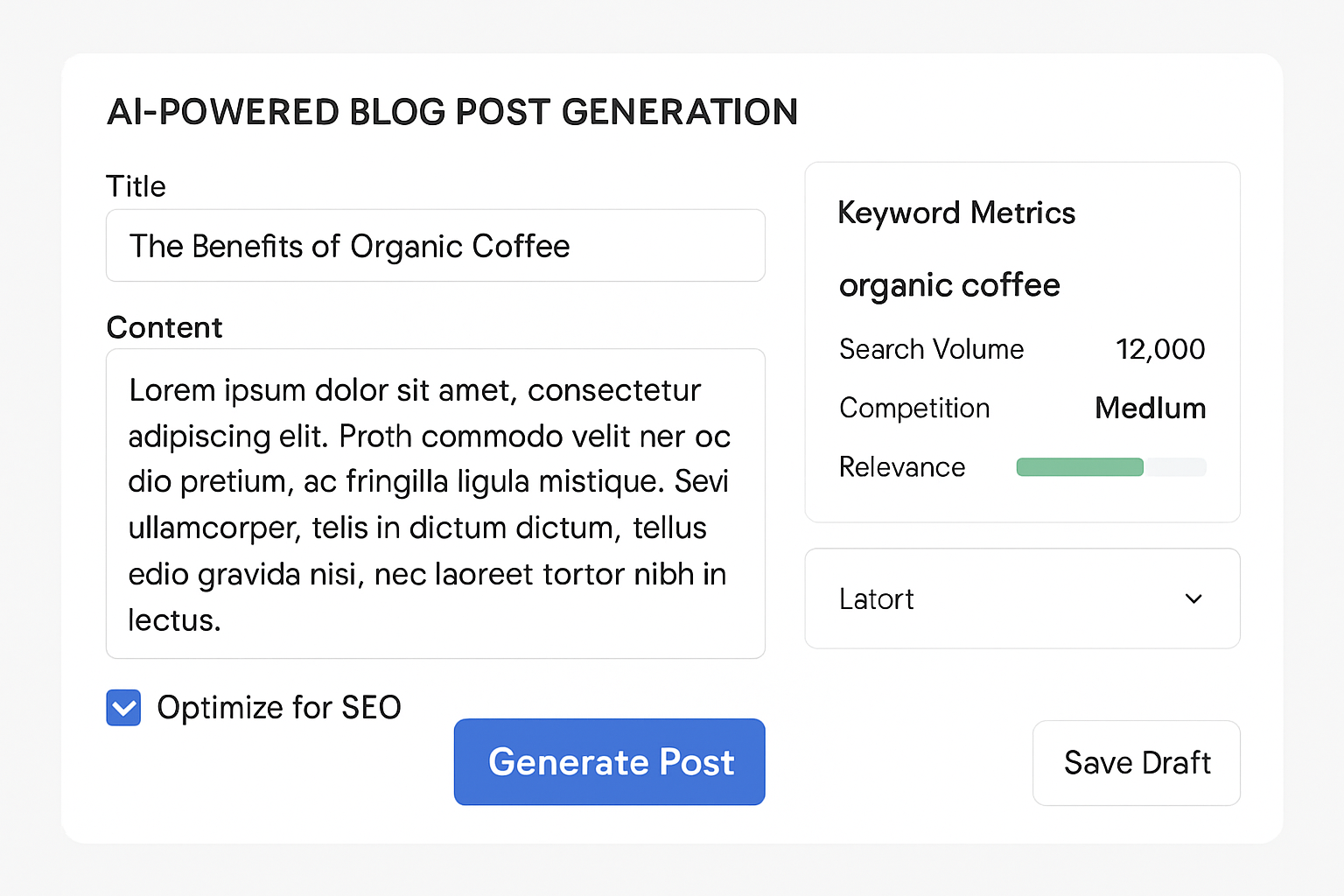
Why Is Automated Blog Posting Important for SEO?
SEO success hinges on consistent, relevant, and optimized content.
Manual content creation struggles to keep pace with the demands of large-scale blogs and fast-moving trends.
Automated blog posting ensures an unbroken stream of keyword-rich posts that satisfy search intent and improve site rankings.
Furthermore, AI analyzes vast data to uncover trending topics and high-impact keywords that human teams might miss.
With projection estimates from IDC showing AI-driven solutions could contribute up to $22.3 trillion to the global economy by 2030, the competitive advantage is clear (verified).
In marketing, AI-driven automation personalizes content to engage different audience segments more effectively, boosting conversion rates and brand loyalty.
Key SEO Benefits of Automation
- Faster Content Turnaround: Post multiple blogs swiftly without lag, conquering competitor timelines.
- Enhanced Keyword Optimization: AI pinpoints strong keyword opportunities with precision.
- Greater Consistency: Uniform tone and branding across posts for cohesive identity.
- Improved Analytics: Real-time tracking and adjustments based on performance metrics.
- Cost-Effective Scaling: Reduce reliance on large content teams and cut overhead.
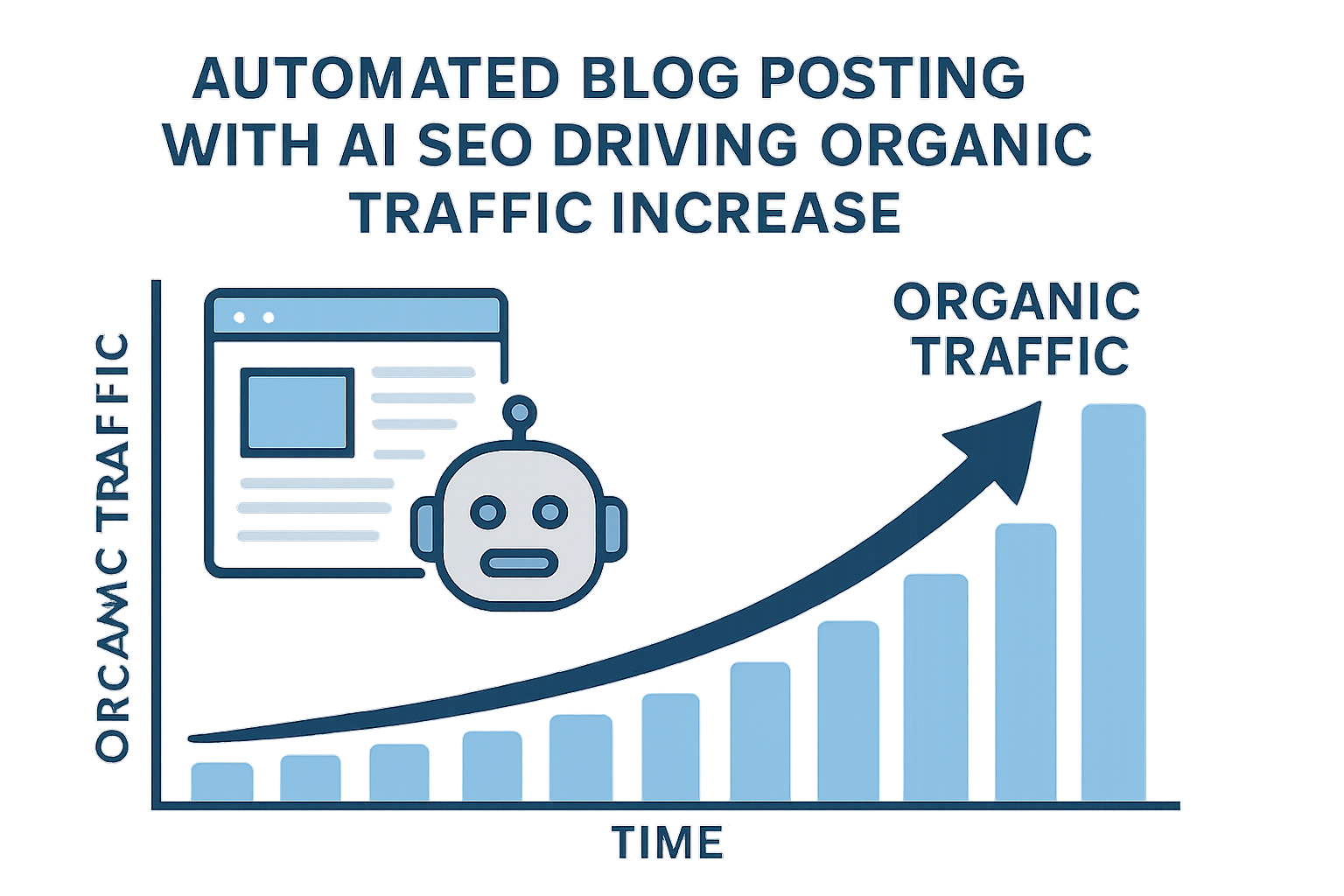
How Does AI Automate Blog Posting and SEO?
Automating blog posting with AI SEO involves several integrated AI-powered components working together:
1. Content Generation
Natural language generation (NLG) models create drafts or complete articles based on brief inputs such as a topic, keywords, or user intent.
AI learns industry jargon, tone, and style to produce content tailored for your audience.
2. Keyword and Topic Research
AI tools analyze search query data, competitor strategies, and trending topics to identify high-potential keywords and content ideas. This removes guesswork and grounds your strategy in data.
3. Content Brief Automation
Creating content briefs is often tedious and inconsistent. AI platforms automate brief generation by aggregating brand guidelines, SEO targets, tone preferences, and market research into cohesive documents for human or machine use (source).
4. On-Page SEO Optimization
AI reviews drafts for keyword integration, meta tags, readability, image alt texts, and internal linking opportunities, optimizing the post before publication.
5. Scheduling and Posting
The final blog post is automatically scheduled and published based on audience peak activity times or campaign calendars.
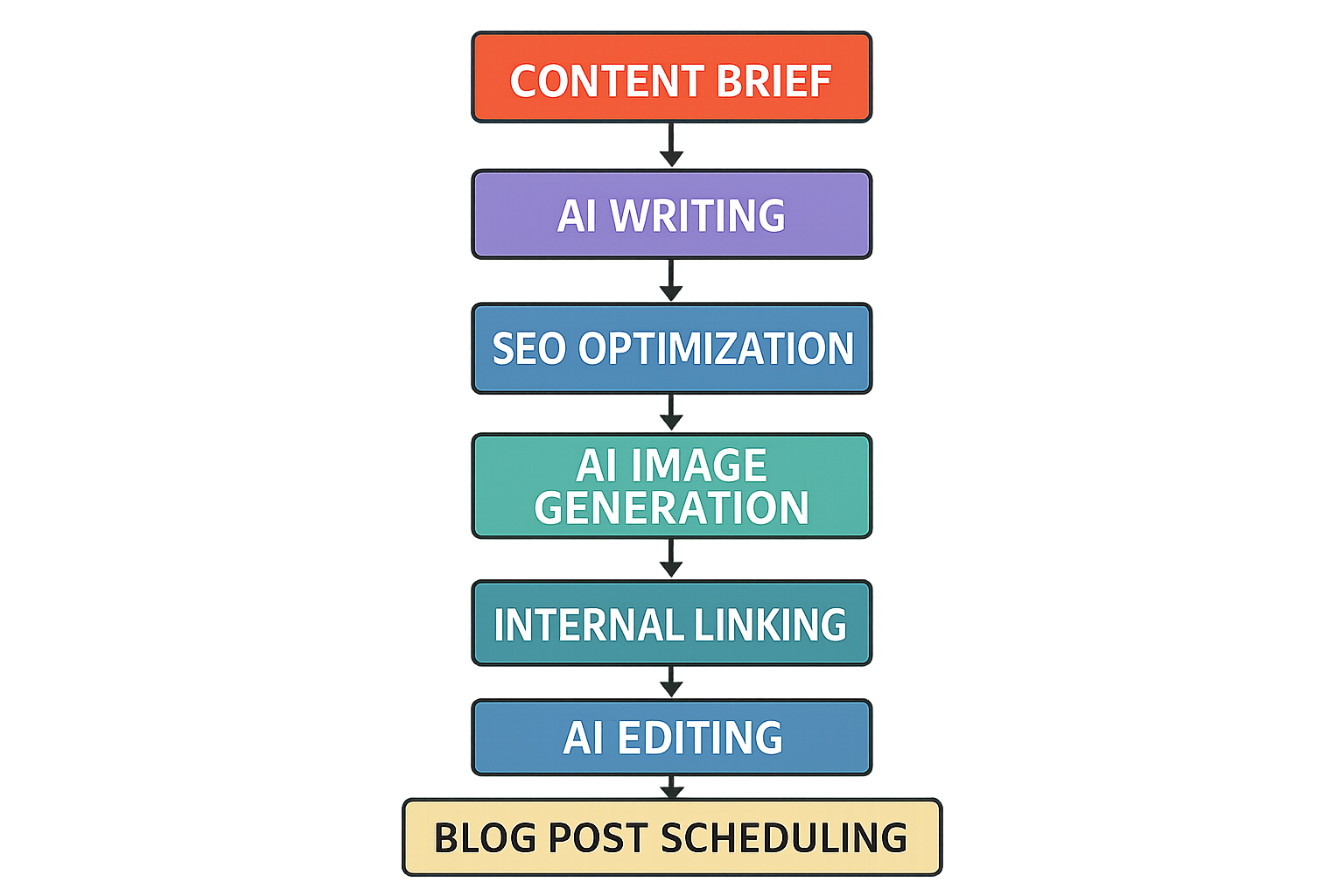
Did you know? Companies embracing generative AI for content creation report not just efficiency gains but also higher employee satisfaction as teams shift focus from repetitive writing to strategic tasks (source).
What Are Best Practices for Automated Blog Posting with AI SEO?
The power of AI lies in amplification, but human oversight keeps quality in check. Here’s how to ensure your automation works for you, not against you.
1. Define Clear Content Goals
Set purpose, target audience, and KPIs before automation. AI performs best with precise inputs and boundaries.
2. Use Authentic Data Sources
Feed AI platforms with updated, accurate data — your brand voice, market trends, and SEO performance metrics. AI shines when backed by quality data (source).
3. Maintain Human Review
AI-generated content can sometimes be generic or off-mark, so editors must review for accuracy, tone, and value.
4. Optimize for User Intent
Align AI content with what users seek, not just keyword matching. Intent-focused writing drives engagement and rankings.
5. Combine With a Robust SEO Strategy
Use AI as part of a bigger SEO toolkit — including backlink building, site technical optimization, and analytics tracking to maximize results (source).
6. Continuously Train Your AI Tools
Regularly update your models and inputs with recent data and feedback to keep outputs fresh and competitive.
How Can Businesses Start Automating Blog Posting with AI SEO?
Launching automated blog posting may seem daunting, but integrating these steps can make the journey manageable and rewarding.
Step 1: Audit Existing Content Workflows
Identify bottlenecks, repetitive tasks, and gaps in your current content creation process.
Step 2: Choose the Right AI Tools
Explore AI content generators, keyword research platforms, and SEO optimizers that fit your business size and budget.
Step 3: Pilot with Limited Automation
Test automation on sample posts, monitor quality, and gather feedback before full-scale deployment.
Step 4: Build Cross-Functional Teams
Align marketing, SEO, and editorial teams to manage AI-driven workflows collaboratively.
Step 5: Establish Clear Quality Control Measures
Define review processes, performance metrics, and ongoing training plans for AI systems.
Step 6: Scale Gradually and Track Results
Expand automation scope based on successes, refining strategies using analytics.
Business leaders are increasingly investing in generative AI to accelerate product development and marketing content, making 2025 the perfect time to adopt these systems (source).
What Are Common Challenges When Automating Blog Posting and How to Overcome Them?
Automation is powerful but not flawless. Understanding potential hurdles prepares you to tackle them efficiently.
1. Quality Concerns
AI content may sometimes be repetitive, bland, or factually inaccurate.
Solution: Use AI for first drafts and human editors for refinement. Implement strict review protocols.
2. Data Overload or Poor Inputs
Garbage in, garbage out. Improper data fed to AI leads to poor outputs.
Solution: Regularly audit data sources and clean inputs for training and generation.
3. Resistance to Change
Teams may fear job displacement or distrust AI outputs.
Solution: Communicate benefits clearly, offer training, and involve staff in AI integration decisions.
4. Automation Overdependence
Relying solely on automation can disconnect content from authentic human insights and creativity.
Solution: Balance automation with strategic human creativity to maintain distinctiveness.
5. SEO Updates and Algorithm Changes
Search engines evolve, and AI must keep pace or risk obsolete content.
Solution: Continuously update AI models and monitor SEO trends for adaptation.
What Are Advanced AI Features Enhancing Automated Blog Posting?
AI technologies are rapidly advancing, pushing automated blog posting capabilities to new heights.
1. AI-Driven Content Personalization
AI tailors blog content dynamically based on user behavior, location, and preferences, increasing engagement and conversions.
2. Multilingual Content Generation
Generating optimized blog posts in multiple languages expands global reach, especially paired with SEO translation strategies (internal link).
3. Predictive Analytics for Topic Selection
AI forecasts emerging trends and topics before they peak, enabling early content leadership.
4. Automated Multimedia Generation
Creating AI-generated images, videos, or infographics aligned with blog themes enhances audience experience and SEO.
5. Semantic SEO Optimization
AI understands user intent and semantic relationships among keywords, optimizing content for natural language and voice search.
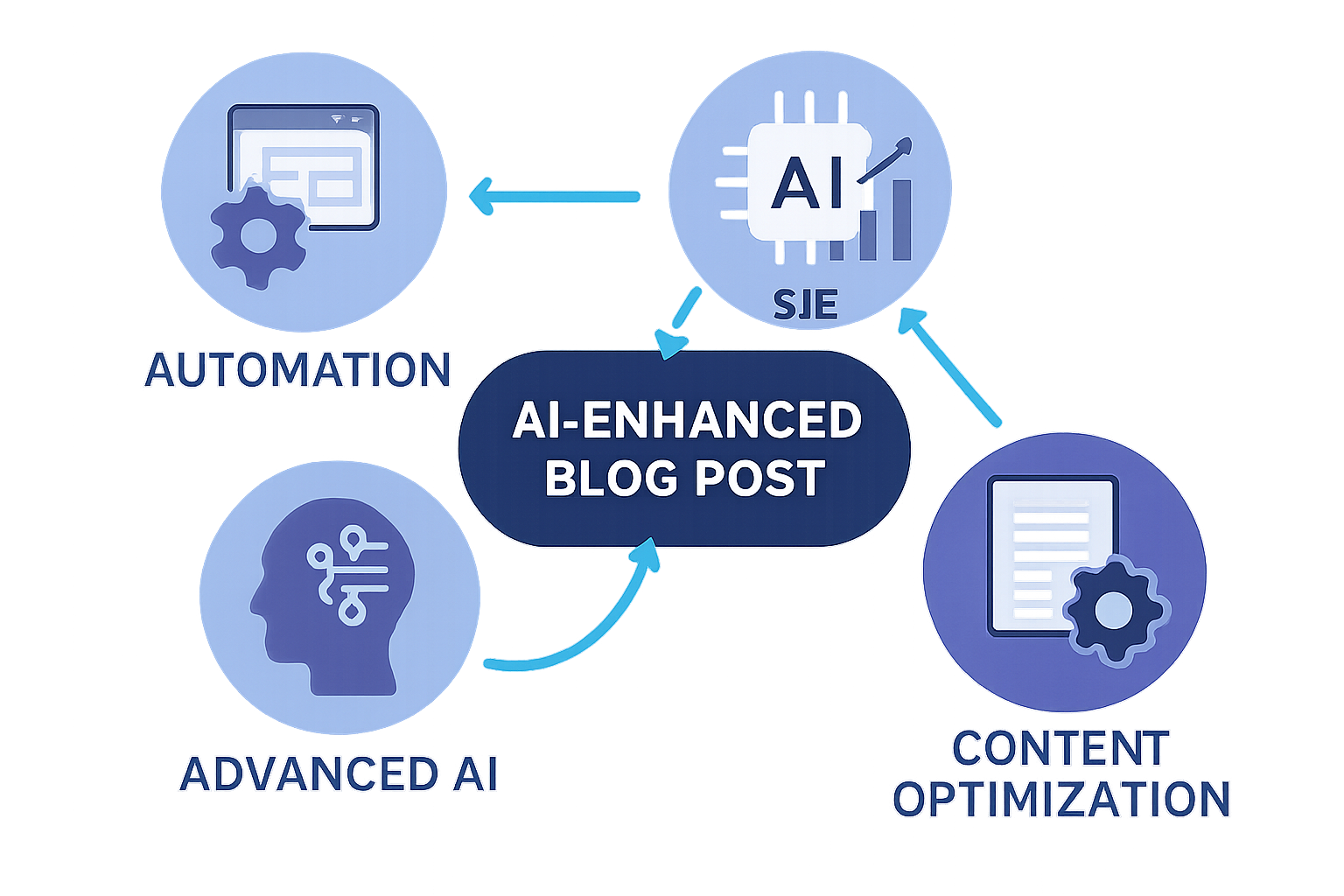
How Do Automated Blog Posting Tools Fit into a Wider Digital Marketing Strategy?
Automated blog posting doesn’t stand alone. It integrates into a holistic digital marketing ecosystem involving several components:
Content Alignment
Blog topics must sync with social media themes, email marketing campaigns, and paid ads to deliver consistent brand stories.
SEO Synergy
Automated blog output works with backlink building and technical SEO to secure high rankings and authority.
Analytics and Feedback Loops
Data from automated blog posts—traffic, bounce rates, conversion tracking—feeds into AI dashboards guiding future improvements (internal link).
Content Scheduling
Automation ensures blogs publish aligned with product launches, holidays, and events, amplifying marketing impact.
Examples in Practice
A retail brand might automate blog posts about seasonal trends while coordinating social media teasers and email newsletters promoting new collections.
A SaaS company uses AI blogs on emerging tech to attract leads, supported by targeted PPC and SEO-driven landing pages.
Videos to Understand Automated Blog Posting with AI SEO
For a deeper grasp, check out this insightful overview by AI content specialists explaining practical implementations and case studies:
Watching expert-led tutorials can accelerate adoption and demystify complex aspects of AI-driven content creation.
How to Ensure Quality in Automated Blog Posting with AI?
Quality separates successful automation from failures. Here are actionable ways to maintain stellar output:
- Implement Multi-Level Reviews: AI drafts should pass through human editing, SEO audits, and compliance checks.
- Regularly Update AI Training Data: Keep datasets current to reflect industry changes and language evolution.
- Monitor User Engagement Metrics: Analyze bounce rates, time-on-page, and conversion to spot content issues swiftly.
- Use A/B Testing: Compare different AI-generated versions to select high-performers.
- Establish Feedback Channels: Collect internal and customer feedback to fine-tune your approach continually.
How Does Automated Blog Posting with AI SEO Impact Marketing Efficiency?
Marketing teams report radical efficiency improvements after implementing AI-powered blog automation.
Time savings on research, drafting, and SEO optimization can reach 50-70%, freeing resources for strategic initiatives.
Campaign launch times shrink from weeks to days, allowing businesses to capitalize on fleeting trends.
Consistent brand voice and SEO compliance reduce costly errors and revisions.
Real-time data insights from AI enable rapid pivoting during campaigns, optimizing ROI dynamically.
As IDC research highlights, 66% of CEOs observe measurable benefits from generative AI in boosting operational efficiency and customer satisfaction (verified).
What Should You Look For in an AI Automated Blog Posting Tool?
Choosing the right tool requires evaluating features, usability, and integration potential.
Core Criteria
- Quality of AI Content: Ability to produce human-like, coherent, and contextually relevant content.
- SEO Optimization Features: Built-in keyword suggestions, meta tag generation, schema markup support.
- Customization: Control over tone, style, and brand voice adaptation.
- Integration: Compatibility with CMS platforms, analytics, and marketing automation software.
- Scalability: Support for multiple languages, volume posting, and multilingual output.
- User Support and Training: Dedicated resources, tutorials, and responsive support teams.
Many platforms offer free trials or demos—be sure to leverage these to assess fit for your needs.
For a breakdown of top AI SEO software that can be paired with automated posting, see this detailed review on rebelgrowth (internal link).
Can Automated Blog Posting with AI SEO Handle Content Briefs Effectively?
Content briefs act as the blueprint for authors and AI alike.
Manual brief creation is time-consuming and prone to inconsistency, but with intelligent automation, you get streamlined, data-driven briefs that boost content quality and strategic alignment.
Platforms powered by Agentic AI and data connectors, such as those from Datagrid, automate content brief generation by unifying scattered business data and providing actionable insights (source).
Automation in this phase leads to consistent tone, better SEO alignment, and faster content turnaround.
How to Balance AI Automation with Human Creativity in Blog Posting?
AI excels in speed and data processing, but creativity, emotional nuance, and storytelling depth still need human touch.
Use AI to handle repetitive tasks like keyword research and initial drafts.
Dedicate your team to editing, adding unique perspectives, anecdotes, and calls to action.
This collaboration creates authentic, engaging content that ranks well and resonates deeply with readers.
What Is the Future of Automated Blog Posting with AI SEO?
As AI models advance, expect even more sophisticated content capabilities, including:
- Hyper-personalized blog experiences tailored directly to individual reader behavior in real time.
- Seamless integration of multimedia generated on-demand to enrich blog posts automatically.
- Greater language understanding for natural, conversational content that adapts to emerging voice search trends.
- Proactive SEO adaptations leveraging predictive algorithms forecasting ranking shifts before they occur.
- Enhanced ethical AI implementations ensuring content transparency and credibility.
The next wave will blend AI intelligence deeper into content strategy, enabling marketers to unlock unprecedented growth and audience connection.
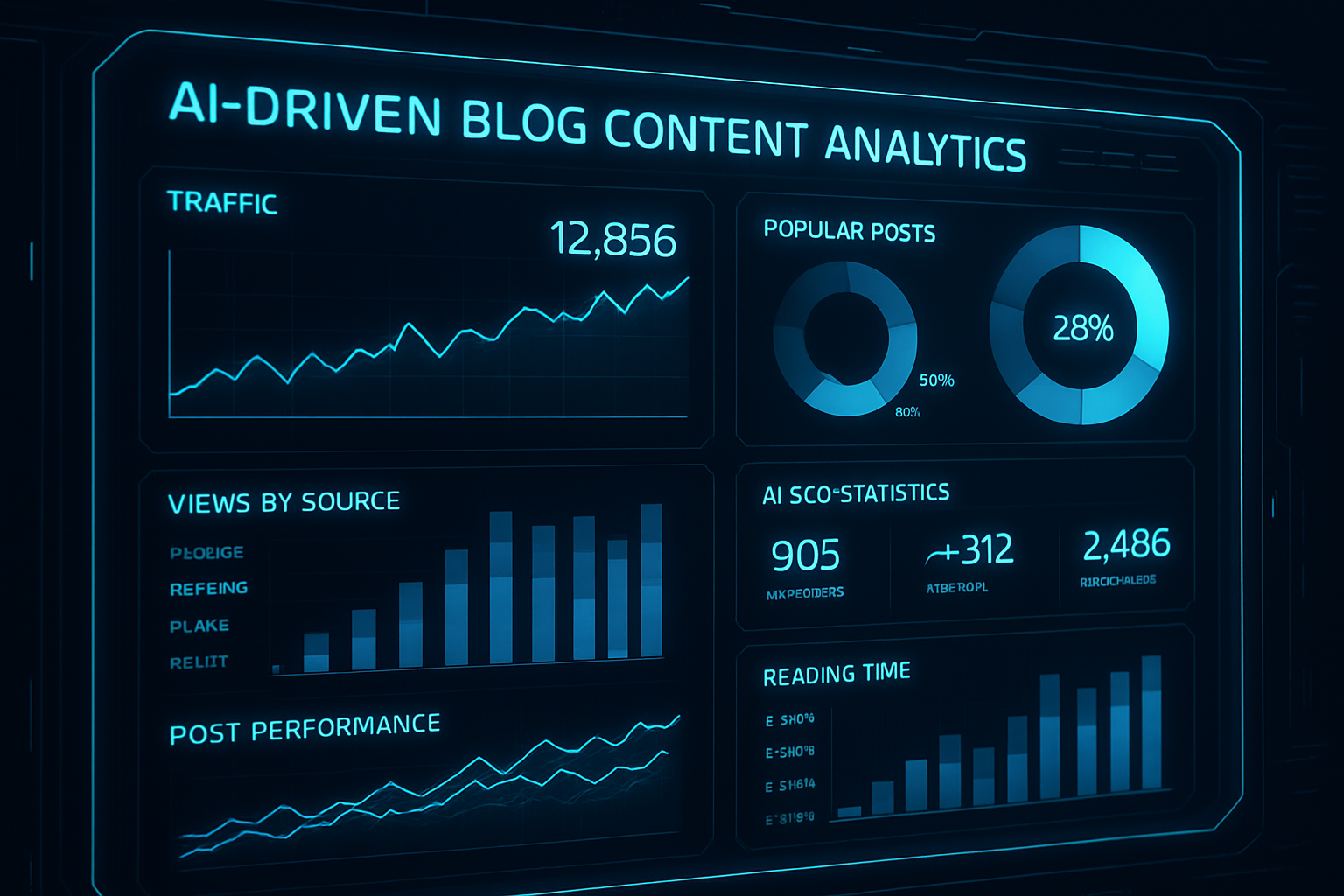
Frequently Asked Questions About Automated Blog Posting with AI SEO
- Is AI-generated content safe for SEO?
- Yes, when used responsibly with human oversight and aligned with quality guidelines, AI content can be fully SEO compliant and effective.
- Can automated posting tools write entire blogs?
- Many tools can generate full posts, but best practice combines AI drafts with human editing for accuracy and style.
- How does automation affect content originality?
- AI uses training data but generates original text based on patterns, ensuring uniqueness. Plagiarism checks are recommended.
- Will AI replace human content creators?
- AI enhances creators' efficiency but cannot fully replace the creativity, empathy, and strategic thinking humans provide.
- How do I measure success in automated blog posting?
- Track organic traffic growth, keyword rankings, engagement metrics, and conversion rates to evaluate impact.
What's Your Next Step?
Tell us in the comments: How will you apply this to your content strategy? For personalized advice, explore our detailed automation guides! Ready to scale smarter?